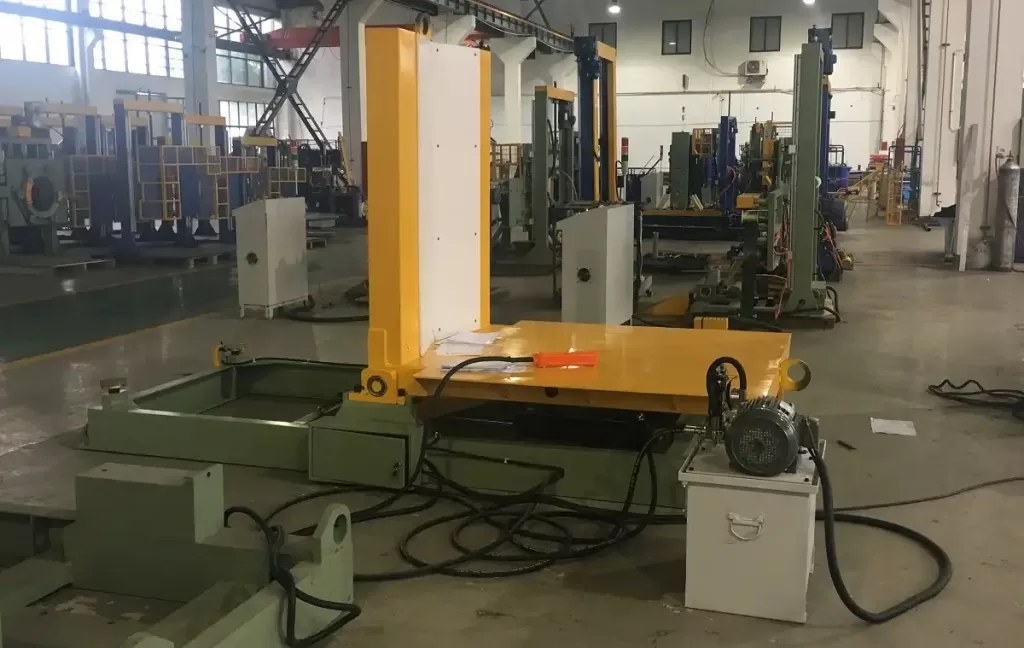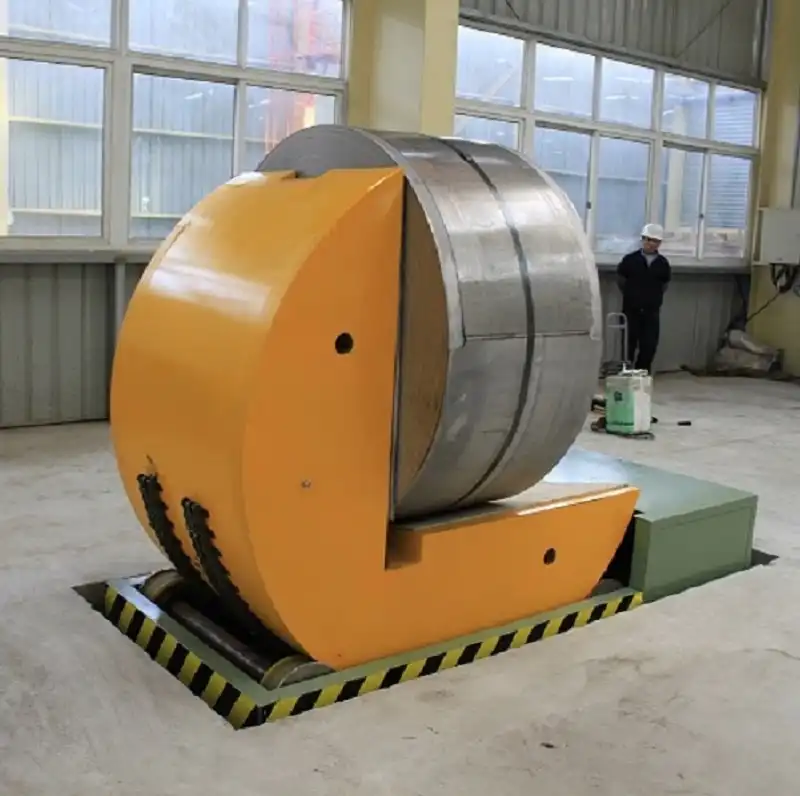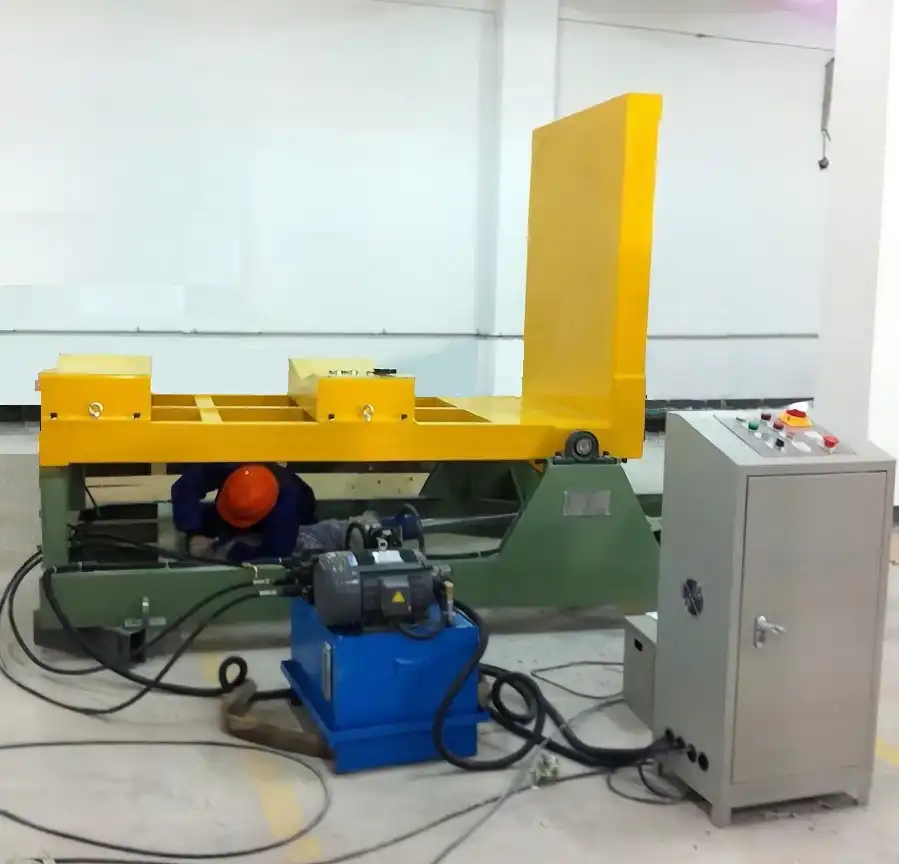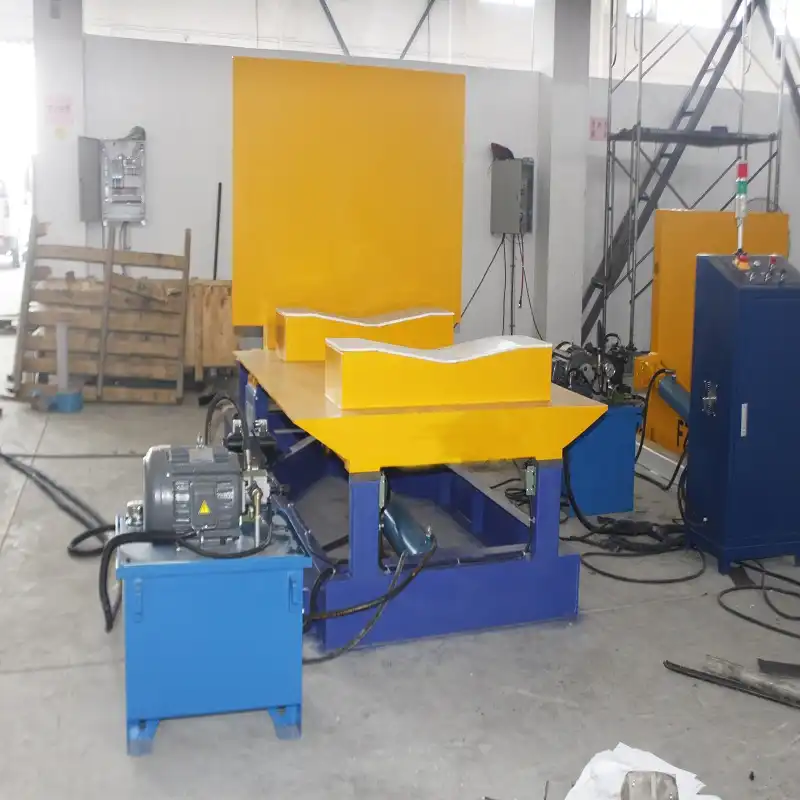Optimizing Your Operations: How a Hydraulic Upender Benefits Every Department

Introduction: Unlocking Cross-Departmental Value
In today's competitive industrial environment, maximizing manufacturing efficiency and ensuring operational safety are critical goals. Every investment, especially in machinery, must demonstrate clear value. While often seen as specialized equipment, the hydraulic upender offers widespread benefits that resonate across multiple departments. This powerful machine, designed for rotating and repositioning heavy, bulky items, is far more than a production tool; it's a strategic asset enhancing safety, efficiency, quality, and cost-effectiveness throughout your organization. Understanding these comprehensive advantages is crucial for convincing stakeholders of its essential role in a modern, optimized facility.
This guide explores the specific, tangible benefits a hydraulic upender delivers to key departments. We will detail how this equipment streamlines processes, protects employees, reduces costs, and ultimately contributes to a stronger bottom line, providing you with the insights needed to justify this valuable investment.
1. What is a Hydraulic Upender and How Does It Work?
A hydraulic upender, sometimes referred to as a coil upender, load tilter, or load inverter, is robust material handling equipment engineered to safely rotate heavy or unwieldy loads, typically by 90 or 180 degrees. Common in industries like steel processing, paper manufacturing, automotive assembly, and heavy fabrication, these machines use powerful hydraulic systems for smooth, controlled movement. By automating the rotation of items such as steel coils, molds, dies, or large assemblies, they bridge critical gaps in production and logistics workflows where manual or less specialized equipment would be inefficient or unsafe.

2. Boosting Production Throughput and Efficiency
Production teams constantly strive to minimize cycle times and maximize output. Hydraulic upenders directly contribute by:
- Drastically Reducing Handling Time: Automating the rotation process is significantly faster than using cranes with complex rigging or manual methods.
- Improving Workflow Integration: Seamlessly integrating into production lines, upenders ensure smooth transitions between processes (e.g., moving coils from vertical storage to horizontal processing).
- Minimizing Bottlenecks: By efficiently handling heavy loads, upenders prevent delays often associated with manual repositioning or waiting for overhead cranes.
This leads to increased throughput, faster order fulfillment, and a more predictable production schedule.
3. Enhancing Workplace Safety and Reducing Injury Risk
Manual handling of heavy objects is a primary source of serious workplace injuries, including musculoskeletal disorders (MSDs), strains, and crush injuries. A hydraulic upender mitigates these risks significantly:
- Eliminating Manual Strain: It removes the need for workers to manually push, pull, or leverage heavy items during rotation.
- Providing Controlled Movement: The hydraulic system ensures smooth, stable rotation, preventing sudden shifts or drops that could cause injury or damage.
- Reducing Worker Fatigue: Automating this strenuous task lessens physical demands on employees, contributing to a healthier and more alert workforce.
Investing in an upender demonstrates a commitment to safety, potentially lowering workers' compensation claims and associated costs. For more information on manual handling risks, consult resources from safety bodies like OSHA (Occupational Safety and Health Administration).
4. Improving Product Quality and Preventing Damage
Maintaining product integrity during handling is crucial. Hydraulic upenders contribute to quality control by:
- Ensuring Gentle Handling: The controlled motion minimizes shock loads and prevents scratches, dents, or deformation common with less precise methods.
- Allowing Accurate Positioning: Loads can be rotated and placed precisely for subsequent operations (e.g., inspection, machining, assembly), reducing errors.
- Protecting Sensitive Materials: For items like paper rolls or non-ferrous metal coils, the upender's stable platform and controlled rotation prevent costly damage.
This results in less scrap, fewer rejects, and higher overall product quality, enhancing customer satisfaction.

hydraulic coil upender for 10t 5. Lowering Operational Costs Through Efficiency and Automation
The financial benefits of a hydraulic upender extend beyond initial ROI calculations:
- Reduced Labor Costs: Automating the tilting process frees up labor previously dedicated to manual handling or complex crane operations, allowing personnel to focus on higher-value tasks.
- Minimized Product Damage Costs: As mentioned, preventing damage avoids costs associated with rework, scrap, or replacement materials.
- Lower Equipment Wear: Reduces reliance on overhead cranes for simple rotation tasks, potentially lowering crane maintenance needs and extending their lifespan.
- Energy Efficiency: Modern hydraulic systems are designed for efficiency, consuming power primarily during the rotation cycle.
6. Optimizing Warehouse and Inventory Management
For logistics and warehouse teams, space optimization and efficient inventory handling are vital. A hydraulic upender assists by:
- Enabling Flexible Storage: Easily switch loads between horizontal and vertical orientations to best utilize available warehouse space (e.g., storing coils vertically to save floor space).
- Facilitating Easier Access: Repositioning large items allows for easier access for inventory counts, inspection, or retrieval.
- Streamlining Staging: Prepare loads in the correct orientation for storage or shipping efficiently.
This leads to better space utilization, improved inventory accuracy, and faster retrieval times.
7. Strengthening Logistics and Distribution Operations
Efficient loading and unloading are critical in logistics. Hydraulic upenders improve this process by:
- Preparing Loads for Optimal Transport: Tilting goods into the required orientation for safe and stable loading onto trucks or containers.
- Reducing Loading/Unloading Times: Faster repositioning speeds up the entire shipping process.
- Minimizing In-Transit Damage: Ensuring loads are properly oriented and secured reduces the risk of shifting and damage during transportation.
This improves shipping efficiency, reduces transport-related claims, and enhances delivery reliability.
8. Supporting Flexible and Customized Manufacturing
Modern manufacturing often requires handling a diverse range of products. Hydraulic upenders offer versatility:
- Handling Various Load Types: Capable of managing different sizes, shapes (coils, rolls, flat panels, assemblies), and weights within their specified capacity.
- Adapting to Workflow Changes: Easily integrated or moved (depending on model) to support changing production layouts or requirements.
- Facilitating Custom Operations: Essential for processes requiring specific orientations for custom fabrication, assembly, or finishing tasks.
This adaptability makes the upender a valuable tool in agile manufacturing environments.
9. Contributing to Sustainability Goals
While primarily operational tools, hydraulic upenders also support environmental objectives:
- Reducing Material Waste: By minimizing product damage during handling, less material is scrapped, conserving resources.
- Optimizing Energy Use: Compared to prolonged use of multiple pieces of equipment (like cranes and forklifts working together for rotation), an upender performs the task efficiently.
- Enhancing Process Efficiency: Streamlined operations often correlate with lower overall energy consumption per unit produced.
Incorporating efficient machinery like upenders aligns with corporate sustainability initiatives.
10. Providing Clear Financial Justification and ROI
From a financial perspective, the investment in a hydraulic upender is justifiable through:
- Quantifiable Cost Savings: Calculate savings from reduced labor, lower injury costs, minimized product damage, and increased throughput.
- Improved Asset Utilization: Maximize the productivity of downstream equipment by ensuring materials are presented correctly and without delay.
- Predictable Performance: Reliable operation reduces unexpected costs associated with equipment failure or inefficient manual processes.
A detailed Return on Investment (ROI) analysis, factoring in these savings and productivity gains, typically shows a favorable payback period for hydraulic upenders in suitable applications.

hydraulic upender 10t 11. Building Stakeholder Confidence Through Proven Benefits
When presenting the case for a hydraulic upender, focus on its comprehensive impact:
- Highlight Cross-Departmental Wins: Emphasize how the investment benefits Production, Safety, Logistics, Quality, and Finance simultaneously.
- Use Data and Examples: If possible, use internal data on handling times or damage rates, or cite industry case studies demonstrating efficiency gains and safety improvements.
- Frame it as a Strategic Investment: Position the upender not just as equipment, but as a solution for key operational challenges like safety compliance, cost reduction, and competitive productivity.
A well-rounded argument addressing the concerns and priorities of all stakeholders is key to gaining approval.
12. Benefiting from Durability and Reduced Maintenance
Modern hydraulic upenders are designed for industrial environments and offer:
- Robust Construction: Built with heavy-duty materials and components for longevity.
- Reliable Hydraulic Systems: Proven technology that requires standard preventative maintenance but is known for durability.
- Simplified Maintenance Procedures: Compared to more complex machinery, routine checks and maintenance are often straightforward.
This reliability minimizes downtime and ensures the equipment is available when needed, further supporting operational efficiency and reducing long-term maintenance burdens.
Conclusion: A Strategic Investment for Comprehensive Improvement
Investing in a hydraulic upender is more than acquiring a piece of material handling equipment; it's a strategic decision that yields substantial benefits across your entire operation. From enhancing worker safety and reducing injury risks to boosting production efficiency, improving product quality, optimizing logistics, and lowering operational costs, its impact is far-reaching.
By clearly articulating these diverse advantages to stakeholders – demonstrating how the upender addresses key performance indicators in safety, productivity, quality, and finance – you can build a compelling case for its adoption. A hydraulic upender is an investment in a safer, more efficient, and more competitive future for your business.